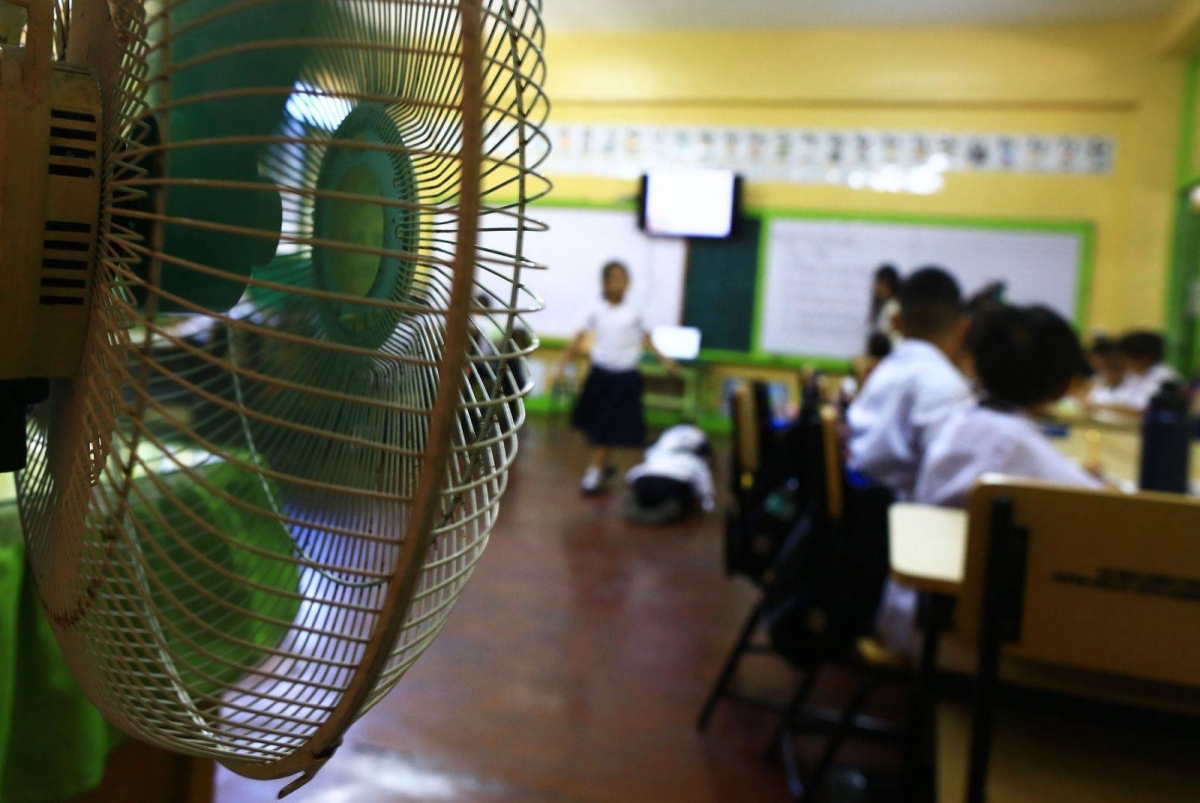Despite the efforts to mitigate the effects of the extreme heat, the situation remains challenging for both students and teachers. The scorching temperatures not only make it difficult for students to concentrate and learn effectively but also pose health risks. Heat exhaustion and dehydration are common concerns, especially in schools without proper ventilation and access to clean drinking water.
Parents and educators are growing increasingly concerned about the long-term impact of the heatwave on their children’s education. The prolonged suspension of in-person classes disrupts the learning process and hampers the development of social and emotional skills that are best nurtured through face-to-face interactions. Remote learning, while a viable alternative, is not without its challenges. Many students lack access to reliable internet connection and suitable devices, hindering their ability to fully engage in online classes.
Efforts are being made to provide relief to affected schools. The Department of Education, in collaboration with local government units and non-governmental organizations, has initiated programs to distribute portable electric fans and install additional ventilation systems in classrooms. Schools are also encouraged to implement flexible schedules, allowing students to attend classes during cooler hours of the day.
However, addressing the issue of extreme heat in schools requires a comprehensive and sustainable approach. Investing in infrastructure improvements, such as the installation of air conditioning units and the construction of well-ventilated classrooms, is essential to create a conducive learning environment. Additionally, raising awareness about the importance of hydration and providing access to clean drinking water should be prioritized.
Furthermore, the impact of climate change cannot be ignored. The El Niño weather phenomenon, which has exacerbated the extreme heat in the Philippines, is a stark reminder of the urgent need to address environmental issues. Implementing measures to mitigate climate change, such as reducing greenhouse gas emissions and promoting sustainable practices, is crucial to prevent further escalation of extreme weather events.
As the heatwave continues to affect thousands of schools in the Philippines, it is imperative that immediate action is taken to ensure the well-being and education of the nation’s students. Collaboration between government agencies, educational institutions, and the community is vital to implement effective solutions and adapt to the changing climate. Only through collective efforts can the adverse effects of extreme heat on education be minimized, allowing students to thrive in a safe and conducive learning environment.
Support for the Decision to Stay Home
The decision to keep students at home during the hot weather has garnered support from parents like Bheapril Balbin, whose two children attend a primary school near Manila. Balbin expressed her agreement, saying, “The heat is too much, my children couldn’t take it.” She further explained that some of their classmates fell ill, experiencing headaches due to the extreme heat. Balbin’s youngest child has asthma, making the intense heat particularly harmful to his health.
The state weather forecaster predicted that the heat index would reach the “danger” level of 42 or 43 degrees Celsius (107.6-109.4 degrees Fahrenheit) in several areas of the country. In Manila, the heat index was expected to reach the “extreme caution” level of up to 40 degrees Celsius (104 degrees Fahrenheit), where heat cramps and exhaustion become possible. The heat index in the country measures what the temperature feels like, taking into account humidity.
Although the actual maximum temperature in Manila on Friday was 35.5 degrees Celsius (95.9 degrees Fahrenheit), Lorie Dela Cruz of the state weather forecaster warned that the heat would worsen as the summer season approached its peak. She clarified that the current temperature was “within the normal range” for this time of year.
Alberto Muyot, the Chief of Save the Children Philippines, emphasized the detrimental impact of the extreme heat on children. He stated, “Children are simply unable to concentrate in the classroom, and their health is also at risk.” The scorching temperatures not only hinder students’ ability to focus but also pose health risks.
Furthermore, Muyot highlighted the long-term effects of prolonged exposure to high temperatures on children’s well-being. He explained that extreme heat can lead to dehydration, heatstroke, and even heat-related fatalities. Children, in particular, are more vulnerable to these risks due to their smaller body size and higher metabolic rates. The decision to keep students at home during this period of intense heat is not only a practical one but also a responsible measure to ensure their safety and well-being.
Moreover, the support for the decision to stay home extends beyond parents. Teachers and school administrators have also expressed their agreement, acknowledging the challenges of teaching and learning in such extreme conditions. The scorching heat makes it difficult for teachers to deliver lessons effectively, and students find it hard to concentrate and engage in classroom activities.
In addition to the physical discomfort and health risks, the decision to stay home also takes into account the mental well-being of students. The oppressive heat can lead to irritability, fatigue, and decreased motivation, making it challenging for students to perform at their best academically. By allowing students to stay home, they can avoid unnecessary stress and pressure, creating a more conducive learning environment when they eventually return to school.
Overall, the support for the decision to keep students at home during the hot weather is grounded in the recognition of the adverse effects of extreme heat on children’s health, concentration, and overall well-being. It is a proactive measure that prioritizes their safety and ensures a conducive learning environment. As the summer season reaches its peak, it is crucial to continue monitoring the weather conditions and make informed decisions that prioritize the best interests of the students.







